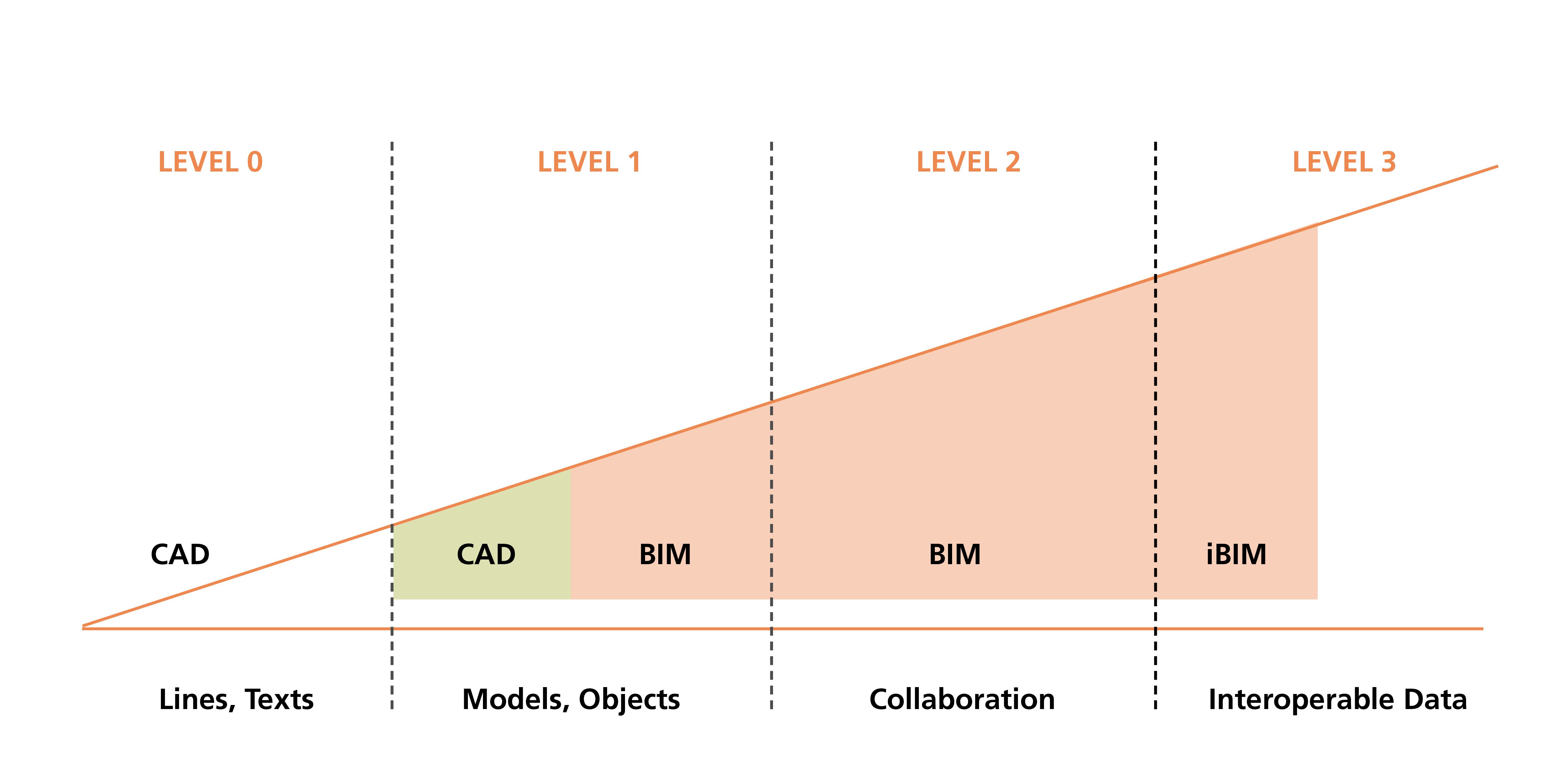EXPLAINING THE BIM LEVELS
There are currently four levels of BIM under which Building Information Modelling can be classified. At Levels 0 and 1 there is either a lack of BIM or an over-reliance on different systems of data. In April 2016, the UK Government mandated compliance with BIM Level 2 in order to fund any public sector construction project. At Level 2 there is a structure to the data for a built asset which requires collaboration across the supply chain. BIM Level 3 will be defined and targeted once the construction industry has achieved compliance with Level 2.
Levels of BIM Maturity

(Copyright: Bew & Richards - 2008/10)
BIM Level 0 (pre-2011)
BIM Level 0 actually represents a lack of Building Information Modelling. At Level 0 there is no collaboration between those parties collating information about a built asset. Most data will be 2D (likely CAD) drawings and any information which is exchanged will be done so using paperwork.
BIM Level 1 (2011)
When BIM Level 1 has been reached it is implied that the data has assumed a form of structure. The CAD is now either 3D or 2D with some commonality in the data environment. However, there is still some distance to collaboration between different parties being achieved.
BIM Level 2 (2016)
BIM Level 2 is required by the Government on all public sector construction projects. Therefore, organisations in the construction industry must demonstrate compliance before the Treasury will release funding. At Level 2, collaboration has been introduced between teams and the process of BIM is being followed. There is still a lack of a single source of data, but crucially any data collected about a built asset is now shared. There is commonality in the data structure which enables a federated BIM model to be produced.
BIM Level 3 (20??)
Once the construction industry has achieved compliance to BIM Level 2, the Government will begin to define and set targets for the achievement of BIM Level 3. At Level 3, there is complete and total collaboration in the planning, construction and operational life cycle of any built asset. The data is shared, collected and stored using a single source of data.
This universal approach to built asset data is known as ‘Open BIM’ – this is the construction industry’s ultimate goal.








